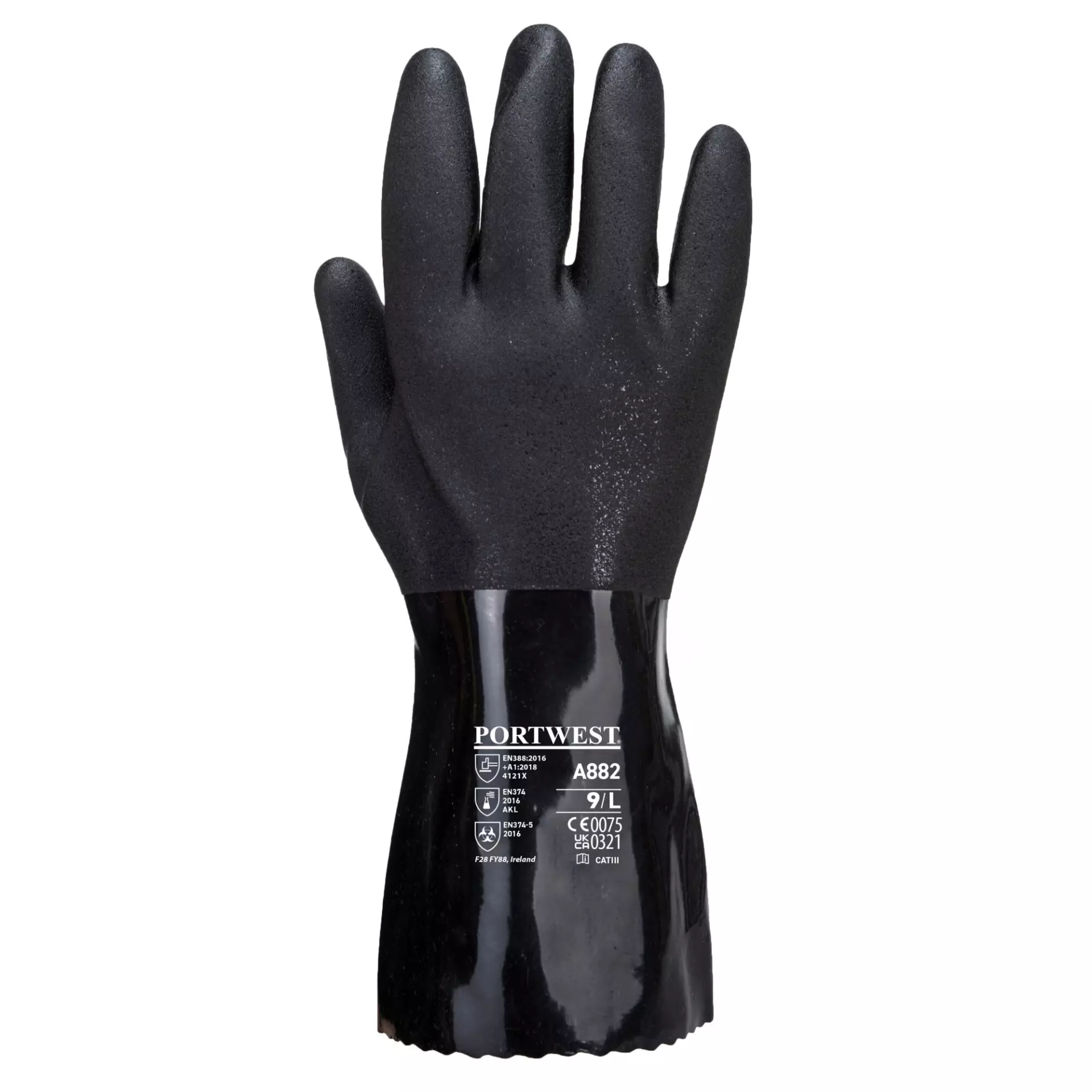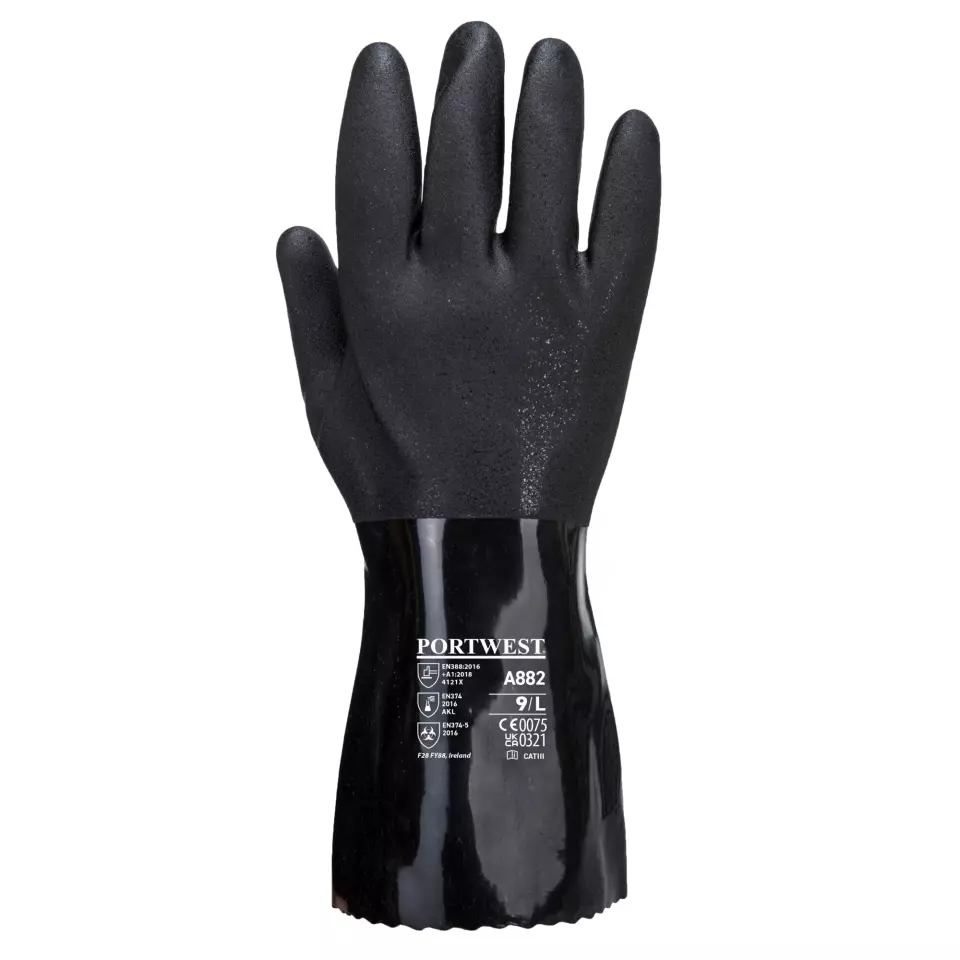

Features You'll Love

Coating Material · Vinyl / Polyvinylchloride PVC
Grip Finish · Sandy
The material applied to glove surfaces to enhance grip, protection, and durability for specific work conditions and hazards.
The surface texture or coating on the palm and fingers that determines how securely the gloves can grip tools, materials, and surfaces during work tasks.

EN 388 · Abrasion Resistance Level 4, Tear Resistance Level 2, Puncture Resistance Level 1
Offers the highest level of protection against intense rubbing and wear from rough materials.
Offers moderate resistance against snagging or catching on rough objects, preventing small rips from growing.
Provides basic protection against punctures from blunt objects like splinters, not sharp points like needles.
Portwest
ESD PVC Chemical Gauntlet, Black, 12 pairs
ESD PVC Chemical Gauntlet, Black, 12 pairs
5 / 5
98,75 €
Price per 12 pairs
8,23 € / pair
Choose size
Out of stock
Free delivery
Features You'll Love

Coating Material · Vinyl / Polyvinylchloride PVC
Grip Finish · Sandy
The material applied to glove surfaces to enhance grip, protection, and durability for specific work conditions and hazards.
The surface texture or coating on the palm and fingers that determines how securely the gloves can grip tools, materials, and surfaces during work tasks.

EN 388 · Abrasion Resistance Level 4, Tear Resistance Level 2, Puncture Resistance Level 1
Offers the highest level of protection against intense rubbing and wear from rough materials.
Offers moderate resistance against snagging or catching on rough objects, preventing small rips from growing.
Provides basic protection against punctures from blunt objects like splinters, not sharp points like needles.
Product description
Premium quality ESD PVC chemical gauntlet engineered for environments where static buildup poses risks. This double-dipped PVC gauntlet features a sandy palm finish for enhanced grip and excellent dexterity, while the seamless flock-lined construction ensures comfort and flexibility. The 1.5mm thick, 300mm long design provides comprehensive chemical resistance and meets multiple safety standards including CE-CAT III certification.
Product Features:
- Double dipped PVC construction with sandy palm finish for secure grip
- Seamless liner with flock lining for enhanced comfort and flexibility
- Phthalate free formulation
- REACH compliant PVC coating
Technical Details:
- Thickness: 1.5mm
- Length: 300mm
- Chemical resistant construction
- ESD properties for static-sensitive environments
Recommended Applications:
- ESD environments where static buildup control is critical
Standards:
- CE certified, CE-CAT III
- UKCA marked (0598/PPE/24/4818)
- EN ISO 21420:2020 Dexterity 5
- EN 388:2016 + A1:2018 (4121X)
- EN 407:2020 (X1XXXX)
- EN ISO 374-1:2016 + A1:2018 Type B (AKL)
- EN ISO 374-5:2016 Micro Organisms
- EN 16350:2014 Pass Level R < 1.0 x 108 Ω
- IEC 61340-5-1:2016